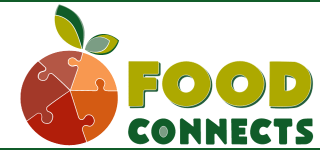Food insecurity is at an all-time high. Individuals and families from all walks of life are turning to food assistance programs more than ever, as the cost of living continues to rise. This challenge is particularly difficult for college students trying to juggle tuition and rent on top of basic necessities.
That’s where Jake Krain, formerly of Food Connects and now Food Pantry Manager at the Amherst Survival Center Campus Pantry, comes in.
“No one should have to choose between their academic success and being hungry," says Jake.
The university-funded food pantry has local roots that date back to the 1970s. It is an extension of the Amherst Survival Center, a community hub in Western Massachusetts. They provide food, health services, winter clothing, laundry, showers, and more to residents of 13 surrounding towns and serve over 11,000 people annually.
In 2025, the Center expanded its reach in a critical way: by opening the Campus Food Pantry at UMass Amherst. The pantry officially opened on September 6, 2025, and is operated by the Survival Center while being located directly on the UMass Amherst campus, making it easily accessible to the university community. The response was immediate. Within the first three weeks, the pantry had already served over 1,000 individuals.
“These numbers absolutely reflect that people really do need this,” says Jake. “And this is something that students and staff have been advocating for literally for decades.”
An internal study conducted by UMass Amherst revealed that 25% of students experience food insecurity. With a university population of 35,000 to 50,000 (including employees), that translates into thousands of individuals in need.
Jake notes that many of those currently using the pantry are master’s students, followed by undergrads, Ph.D. students, and university employees. One group in particular that’s been especially impacted? International students.
"UMass has a strong international student community, which is wonderful," Jake explained. "But many of them aren’t eligible to work due to visa restrictions. The pantry has become a critical resource for them."
The pantry is open to anyone affiliated with UMass Amherst including students, staff, and faculty, regardless of where they live. They provide food not just for the individual, but for their entire household, offering roughly 10 days’ worth of food per visit.
From the start, the Campus Pantry was designed to feel like a grocery store not a hand out line.
"We wanted this to look like a real store," Jake shared. "And it does. It’s incredibly important that people have a dignified shopping experience."
The layout includes aisles of dry goods, a produce section, dairy, snacks, and proteins. Visitors check out just like in a typical grocery store, but instead of scanning prices, items are scanned for points, and no money is exchanged.
The pantry runs on a strong backbone of community support, especially its volunteer team.
“We have volunteers who come in at the same time every week. Some help stock the shelves, others check out groceries. It’s amazing to see the commitment.”
In addition to generous support from UMass Amherst which provides a purchasing budget, the pantry is sustained by partnerships with local food producers and organizations.
The Food Bank of Western Massachusetts supplies a large portion of the pantry’s inventory, much of it donated by local farms like Atlas Farm, whose produce boxes are a frequent sight on pantry shelves.
The UMass Amherst Student Farm provides fresh produce grown by students, for students; a great example of peer-to-peer support.
Food Connects has been instrumental in delivering high-quality, local food, and sometimes stepping in to rescue food that would otherwise go to waste. “You dropped off seven cases of cheese that were set to expire,” Jake said. “It was gone in two days. Our students were so excited. Nothing went to waste.” Food Connects has also helped bring in local products from producers like Boyden Beef, Rhapsody Natural Foods, Singing Pastures, and Dosa Kitchen adding even more variety, nutrition, and cultural relevance to the pantry’s offerings.
Jake is passionate about the importance of local food in addressing food insecurity over the long term:
“Everyone deserves access to high-quality, local food. And if I’m going to spend our purchasing budget, I want to reinvest in our local economy. That strengthens the food system for everyone. That’s how we fight food insecurity in the long run.”
Want To Help?
Whether you're a farmer, food producer, or local resident, there are several ways to get involved:
Donate high-demand items:
Microwaveable meals (frozen or shelf-stable)
Ramen, mac & cheese cups
Peanut butter, rice, oatmeal, cereal
Snacks and non-perishable proteins
Volunteer:
Sign up for weekly shifts to help stock shelves, bag items, or staff checkout.
Spread the word:
Especially among students and employees who may not know this resource exists.
Jake is proud of the success thus far, but emphasizes that this is just the beginning.
“We’re still getting our systems in place and working out the kinks. But the most important thing right now is awareness, to make sure that anyone who needs help knows they can come here.”
And if you’re wondering whether there’s a “type” of person who visits a food pantry, Jake wants you to remember:
“There really is no one face of food insecurity. It could be your neighbor, your professor, your classmate. Groceries are expensive. Rent is high. Utilities are rising. This is one way we can help people get by and do it with dignity.”









